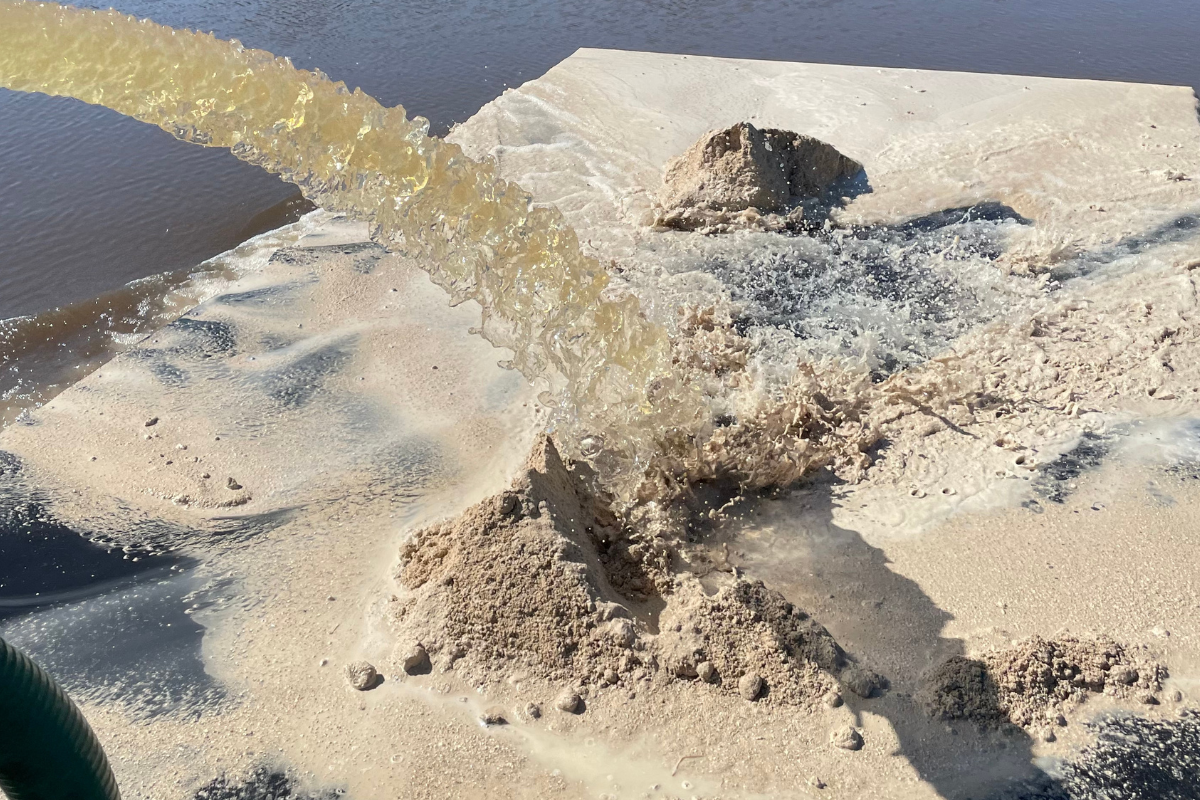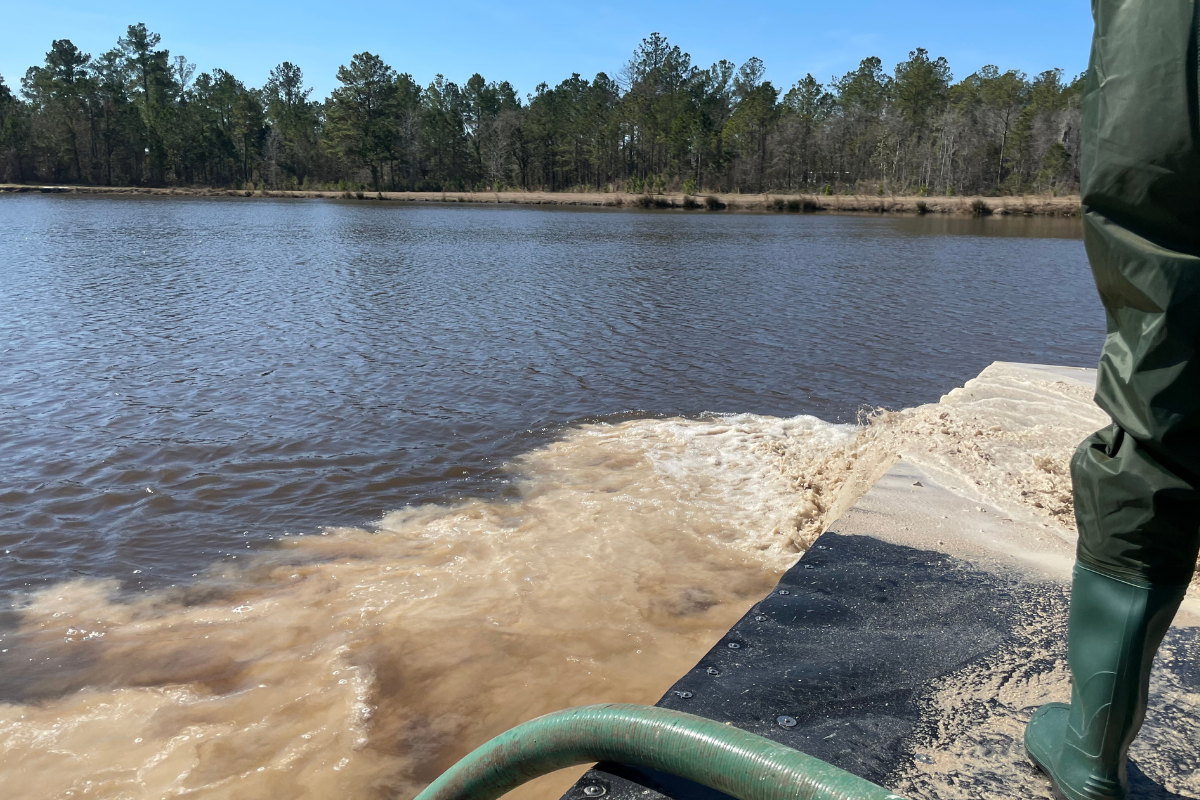Does Your Pond Need Lime?
Our previous blog post discussed the benefits of liming a pond which include increasing nutrient availability and buffering against daily pH swings in the pond water. If you missed that blog, you can find it here. On this blog we wanted to dig a little deeper into the pond liming discussion and talk about when you should add lime, how you should add lime, and how much lime to add.
Let’s first explain how you determine if your pond needs lime. We always recommend having a water quality analysis performed before doing any liming or fertilization. The results from a water quality test will give you the most accurate information as to the state of your pond water. We perform water quality tests each time we survey the fish populations in a pond so we can use the fish data in conjunction with the water data to assess any problems. If you’re not local to us, find a pond management professional local to you and they’ll be able to test your water.
Once the water has been properly tested, you should now have numbers for the alkalinity and hardness of the pond water. These numbers are usually provided in units of ppm or mg/L CaCO3. If the alkalinity or hardness of your pond water are lower than 20ppm, you should definitely consider adding lime. Another, albeit much less scientific, way to determine if you pond needs lime is by looking at the water clarity. If your pond water is extremely clear, it probably lacks nutrients and could benefit from liming.

How Much Lime Should You Add?
A general rule of thumb is to add 1 ton of lime per acre. However, this will vary some depending on the soil at the bottom of your pond. In ponds with very sandy soils, 2-5 tons per acre may be required. This is because sandy soils are more acidic than clay soils, and therefore will require more lime to get the alkalinity where it needs to be.
A better way to determine how much lime you need would be to use the alkalinity and hardness numbers from the water quality analysis. To do this, you’ll need to know the acre-feet number for your pond. This can be easily calculated by multiplying the surface area of your pond (in acres) by the average water depth in your pond. This provides an approximate volume for the pond in acre-feet.
For a pond that has 4 acres of surface area and an average depth of 5 ft, the total acre-feet would be 20. To raise the alkalinity level in your pond 1 ppm, you’d need to add 4.5 lbs of lime per acre-foot of water. To raise the hardness level in your pond, you’d need to add 7 lbs of lime per acre-foot of water. Thus for a pond with a volume of 20 acre-ft, you’d need to add 90 lbs of lime to raise the alkalinity 1 ppm or 140 lbs of lime to raise the hardness 1 ppm. Use these calculations to determine how much lime you’d need to get your pond water to the 20 ppm levels which are considered the threshold for a healthy pond.

When to Add Lime to a Pond?
Lime should be added during the fall and winter months. Don’t add lime to a pond if you’ve recently fertilized the water or plan to fertilize in the next month or two. We prefer to lime during the dead of winter when other pond management activities have somewhat slowed. It can also be done in late winter or early spring, but be sure to give yourself at least a month between liming and any planned fertilizations.
Adding lime will not instantly change your water quality parameters, so don’t test the water immediately after adding lime and expect to see drastic results. It usually takes about 4-6 weeks before you can see water quality changes after adding lime. Also, be sure to always use agricultural lime (also known as dolomitic lime).
How to Add Lime to a Pond?
The best way to add lime to a pond is before it is filled with water, but this is obviously not possible in an established pond. If you have a small pond that is only an acre or two, you can dissolve the lime in a 5 gallon bucket and pour it off the side of the boat while riding around the pond. If you have a larger pond, you’ll probably want to contact a pond management company to do it for you.
Whatever you do, don’t just dump lime from the bank into your pond. It needs to be dissolved into the water across the entire pond. That’s why we use a barge with a large water pump so that we can effectively dissolve the lime across the entire pond surface. If you dump lime onto the edge of a pond, it will likely be slow and ineffective. Remember the goal here is to release bound nutrients from the soil at the pond bottom. If the lime isn’t applied evenly over the pond, it can’t release those nutrients from the entire pond bottom.
How Often Should You Add Lime?
Add lime as often as your water quality samples suggest. If your pond is a relatively closed system with not much outflow, you may only need to lime every few years. If your pond has a significant source of inflow and outflow, you may need to add lime yearly. Either way, your water quality parameters (alkalinity and hardness) will let you know when you need to add lime again.

